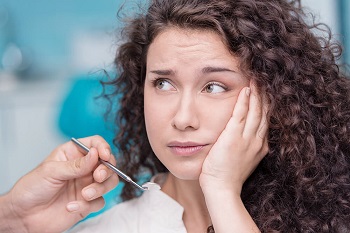
Bleeding gums are usually one of the first signs of gum disease. If you experience this as a once-off situation, you might be able to write it off to brushing and flossing too hard. If it occurs again, it’s best to get checked out at your earliest opportunity, because it can be a symptom of other, more serious health problems.
Gingivitis is the most common cause of bleeding gums. Most people develop this condition when they don’t keep a high enough oral hygiene standard. When saliva, food debris and bacteria mix together, they form plaque that sticks to the teeth and this plaque can harden on your teeth within 24 hours to form tartar. This plaque and tartar cause gum inflammation and bleeding. Even if you brush and floss regularly, unless you pay special attention to gum line of your teeth, the plaque and tartar may build up at the gum line and cause a problem.
Periodontitis usually develops from gingivitis. It is an even more serious disease and another possible cause of bleeding gums. Where gingivitis only affects the gums around the teeth, periodontal diseasedevelops when the bone below the gums becomes inflamed or infected. This results in attachment loss when the gums start to recede or pull back from the teeth. The gum sockets get deeper and accumulate plaque and bacteria, causing bone tissue to be lost and the teeth to get loose.
Other causes of bleeding gums include deficiencies in vitamin C or vitamin K, wearing dentures that are too tight, braces or other oral appliances that irritate the gums, or hormonal changes during pregnancy. Diseases like hemophilia and leukemia can give you a higher risk of bleeding gums, and blood-thinning medications such as warfarin, aspirin, and heparin are also culprits.
To diagnose the cause of your bleeding gums, your dentist is likely to:
Measure your gums using a periodontal probe, to find out how deep the pockets around the teeth have become. Healthy gums usually have pockets between 1 mm and 3 mm deep, so if yours are deeper than that it indicates a problem.
Take X-rays to view the underlying bone. This will determine how deep the damage goes and whether you’ve lost any bone to the disease.
Examine any sensitive teeth, which will help pinpoint the location of the inflammation.
Check for loose teeth, to determine whether you are at risk of losing any. If so, these may need to be extracted and replaced with artificial teeth, or supported in other ways to prevent losing them.
Examine the gums for signs of infection, which might require antibiotic treatment.
If you’re diagnosed with gingivitis or periodontal disease, your dentist will likely prescribe antibiotics to address any infection.
While it’s important to get medical or dental attention to determine the reason for your bleeding gums, there are a number of things you can do at home to improve your overall dental health. You might find bleeding gums go away by themselves if you take steps early enough.
Practice good oral hygiene, brushing and flossing at least twice daily. Rinse your mouth with warm salt water or hydrogen peroxide, taking care not to swallow the solution. Stop smoking, keep your stress levels down and increase your intake of vitamins C and K. Drink cranberry or orange juice to help boost your system naturally, and try massaging your gums with coconut oil or honey. If the bleeding doesn’t go away within a day or two, make an appointment to get a professional opinion.
For more information on how to handle bleeding gums, please book an appointment with our dentists in Scarborough at 416-267-4661, or click here to book online.
Do you ever feel nervous about dentist appointments? Rest assured: we cater to nervous and anxious patients in a gentle and considerate manner. Call us now to schedule a free consultation!